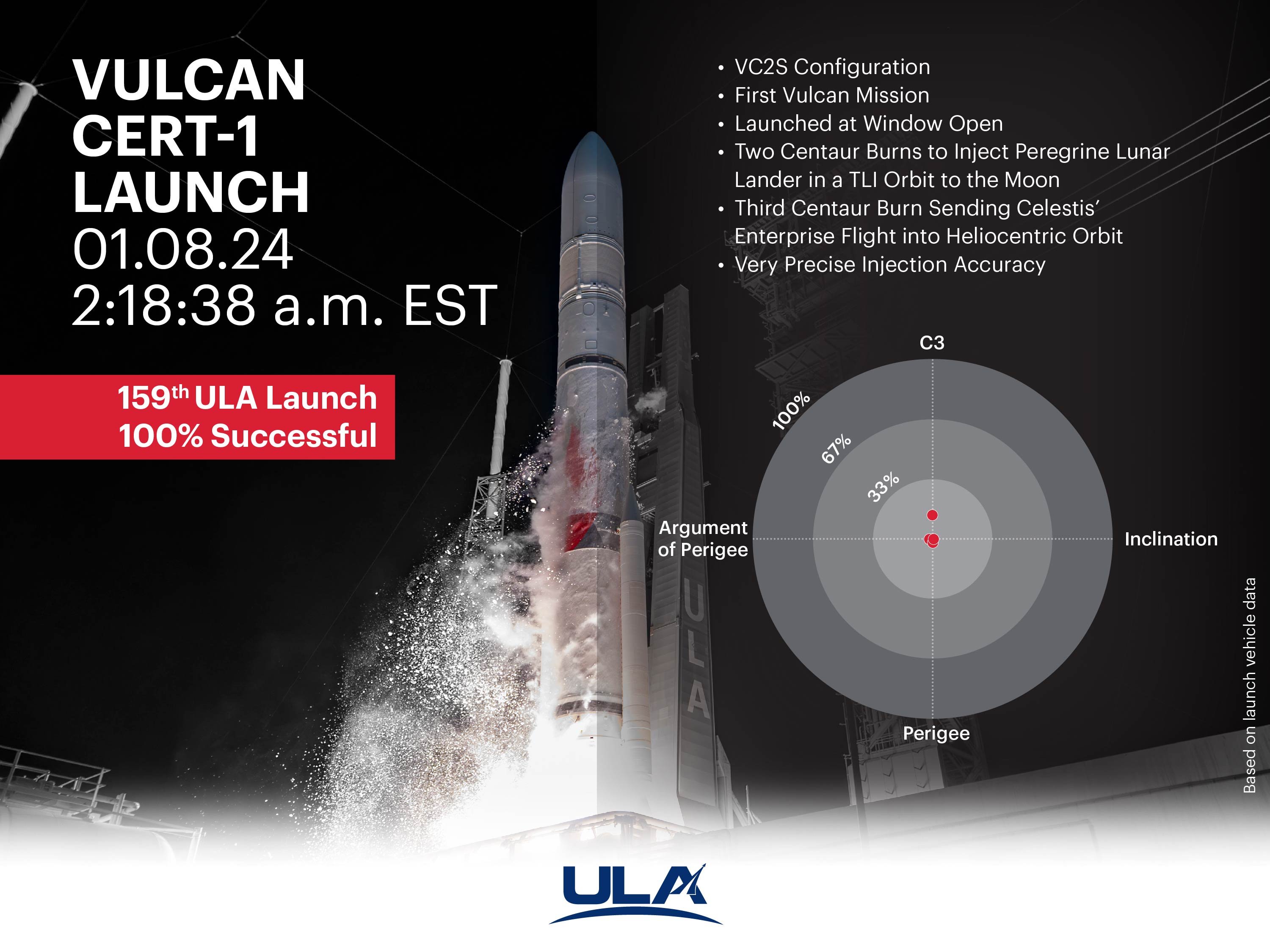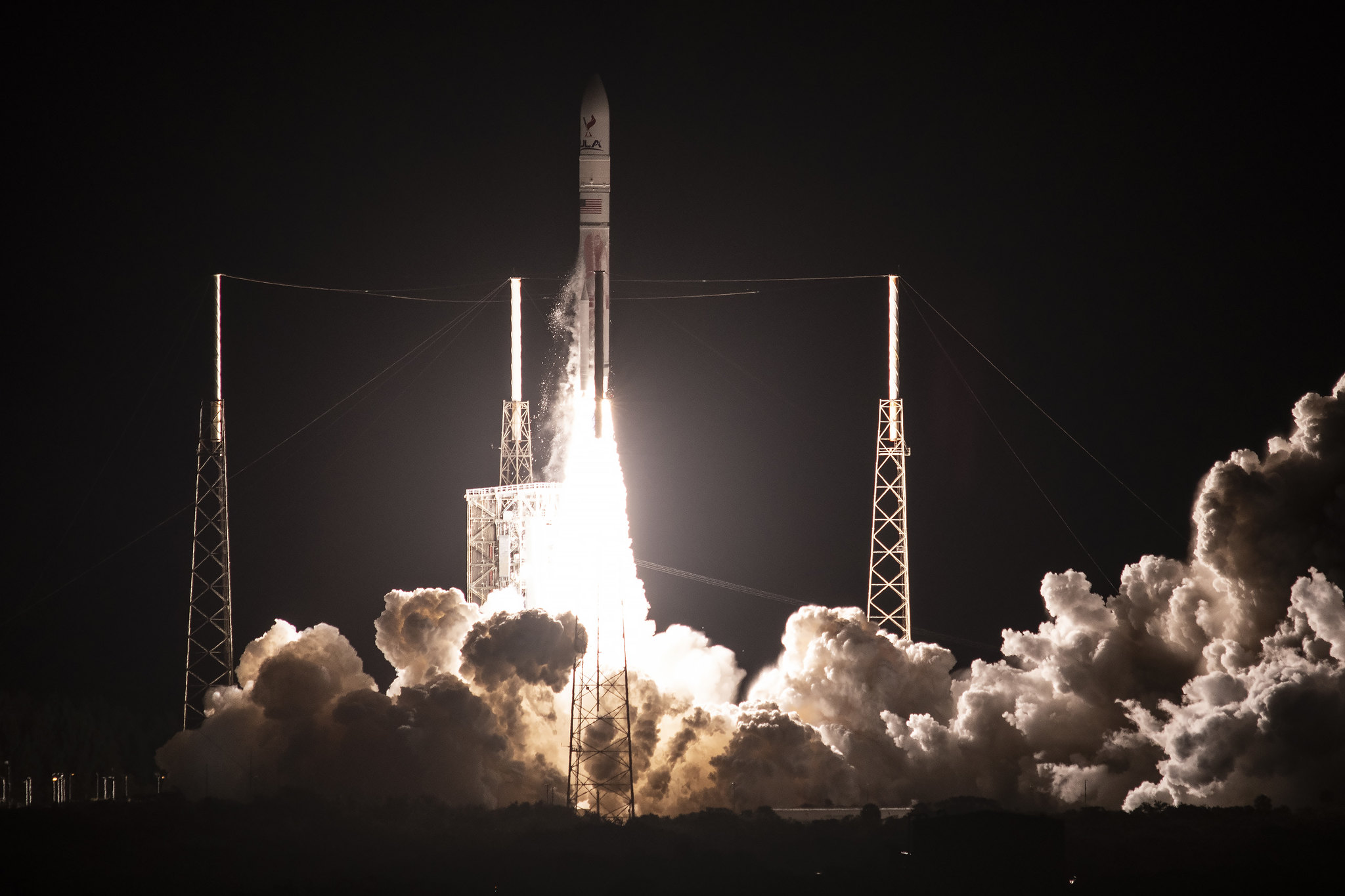The inaugural United Launch Alliance (ULA) Vulcan rocket soared to historic heights on its first Certification flight test (Cert-1) on Jan. 8, leaving Earth orbit and successfully charting a trajectory into deep space with bulls-eye accuracy and precision.
Years of effort to design, develop and build this next generation American rocket culminated with a trouble-free countdown and unanimous “go” for liftoff at 2:18 a.m. EST (0718 UTC) from Space Launch Complex-41 at Cape Canaveral Space Force Station, Florida.
Vulcan gracefully thundered skyward on two million pounds (8.9 kiloNewtons) of thrust. The exhaustive pre-launch test campaign rewarded the team with a remarkable feat of launching at the opening moment of the day’s launch window, on the first attempt. Similar to the first Atlas V flight in 2002, Vulcan rocketed off the pad without delays.
After five minutes of powered flight, Vulcan’s booster stage successfully completed a nominal burn and jettisoned, allowing the new Centaur V upper stage to begin the first of three burns to achieve three distinctly different orbits during the demanding mission profile. The initial burn lasted more than 10 minutes and reached the targeted parking orbit around Earth to begin a quiescent coast period.
At a guidance-calculated time, Centaur V re-ignited its twin engines for a four-minute firing to hit a high-energy, highly elliptical trans-lunar injection orbit to deploy the primary payload, Astrobotic’s Peregrine One of the Cert-1 launch. Separation occurred nearly 51 minutes after liftoff.
The Centaur V then executed a third and final burn that escaped Earth orbit on an interplanetary trajectory with the non-deployable memorial payload that will now orbit the Sun for eternity.
All three orbit injections on Cert-1 were achieved with exact precision, a hallmark of ULA’s legacy rockets that now continues with Vulcan.

Although maneuvering was completed, the launch sequence and the valuable learning for Vulcan engineers was not finished. For more than two additional hours, the Centaur V underwent special tests to demonstrate a long-duration ascent profile like those needed for later missions.
The arrival of the Vulcan era is an exciting moment for ULA, our customers and the nation. Vulcan takes advantage of innovative technologies and streamlined processes to bring new efficiencies, high-tempo operations and unlimited possibilities to the new space economy.
Vulcan’s versatility offers unprecedented flexibility in a single system. From low-Earth orbit to Pluto and beyond, the single-core Vulcan augmented with up to six solid rocket motors does it all.
Vulcan provides the highest-value launch service with optimal performance to meet the full range of customer needs. Vulcan is uniquely designed to meet all the challenging requirements demanded by an expanding spectrum of missions for U.S. national security space launches and is well suited for commercial and civil markets, including launching payloads and missions across the solar system.
The Vulcan manifest includes 70 missions comprised of a mix of government, national security and commercial missions.

 Back To Blog List
Back To Blog List



